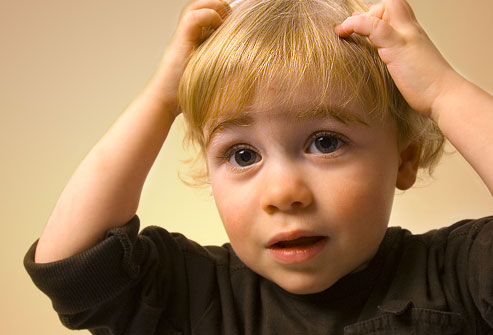 With cold weather approaching, hats and mittens will soon become staples in everyone’s wardrobes.
With cold weather approaching, hats and mittens will soon become staples in everyone’s wardrobes.
Who Can Get Head Lice?
Head Lice do not discriminate, and anyone (yes, anyone) is at a risk of being infected. Children are at a much higher risk of contracting head lice than their adult counterparts.
It is a common misconception that Head Lice can fly or jump. In fact, the insects can do neither. Head Lice move entirely by crawling.
Head lice cab be spread via direct contact with an infected person’s hair.
- Children often hug one another and literally “put their heads together.” Something as simple as whispering in someone’s ear is close enough contact for lice to crawl from one head to another.
- You probably can’t completely prevent this—nor would many parents actually want to. Just be cautious of any child who is scratching his or her head constantly or who complains of an itchy head, and follow up with the school nurse or the child’s parents.
Head lice can also be spread through indirect contact with personal items that an infected person has used
- Hats, scarves, helmets, and caps shouldn’t be shared. Even shared lockers or coat racks have been associated with spreading head lice.
- Make sure your child has his or her own “personal” comb or brush.
- Also, make sure your child uses her own hair ties, barrettes, scrunchies, and hair pins and doesn’t borrow these from other children. Be very open and honest with kids—they don’t want head lice any more than you do.
- If your child is involved in a sport, make sure he or she has his or her own gear, and keep track of it. At the pool or gym, make sure your child has his or her own towels and other personal items.
Prevent Head Lice from Spreading
After learning about and removing the presence of Head Lice in your home, you may feel compelled to disinfect your house with insecticides. The use of insecticides is unnecessary, despite what you may have heard. Without a human host, head lice are unable to survive more than 24-48 hours after removal from a human. Lice are considered “obligate parasites,” which means that their life span is extremely limited without a human host. Save your money (and lungs) by not purchasing insecticides that are often harmful when sprayed indoors.
Keep Them Away!
After your child’s head has been treated for lice, and the nits (lice eggs found on the shaft of a hair follicle) are removed, here are some recommended steps to keep the head lice away for good:
- All the bedding, linens, clothing, and accessories (hats, mittens, coats, scarves) in the household should be changed and washed in a hot water cycle (1400 F)
- Once the wash cycle has completed, dry them with high heat for at least 30 minutes;
- For items that are not machine washable, drop them off at a local dry cleaner. Make sure to inform the staff about the reason the items require dry cleaning to ensure that they can take extra precautions;
- Thoroughly vacuum any surfaces that may have contacted anyone’s heads. This includes all chairs, couches, headboards, and carpeted areas;
- Soak anything that has come into contact with hair in 10 percent bleach or Lysol for one hour. This includes clips, barrettes, combs, brushes, and hair ties. You can also heat them in water—as close to boiling as possible. If it’s feasible financially,
Learn More About Head Lice Prevention Today
For more information and handouts on head lice prevention and removal, come to the Onyx Urgent Care clinic located at 580 Lancaster St. West, Kitchener, ON. Our hours of operation are Monday-Friday from 6pm-11pm and Saturday’s from 4pm-9pm. For regular health tips, follow us on Twitter and Like our Facebook page.